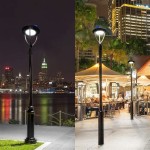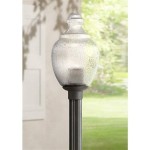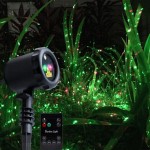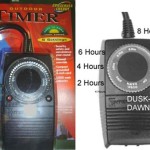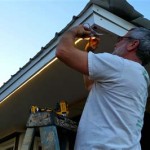How To Wire Outdoor Lights Together
Outdoor lighting can significantly enhance the curb appeal and functionality of any property. Whether you're illuminating pathways, highlighting landscaping features, or adding ambiance to your patio, understanding how to wire outdoor lights together is essential. This guide will walk you through the steps involved in connecting outdoor lights, ensuring both safety and effectiveness.
1. Choosing the Right Wiring and Connectors
Before you start wiring, it's crucial to select the appropriate materials. The type of wiring and connectors you need will depend on the specific outdoor lights and the overall power supply. Here are key factors to consider:
- Wire Gauge: The thickness of the wire, measured in American Wire Gauge (AWG), determines its current carrying capacity. Thicker wires (lower AWG numbers) are needed for higher wattage lights. Refer to the light fixture's specifications for recommended wire gauge.
- Wire Type: Outdoor wiring should be suitable for outdoor use. Types like THHN or UF wire are commonly used for their weather resistance and insulation.
- Connector Type: Connectors are used to join wires and create secure connections. Choose weatherproof connectors designed for electrical applications, such as wire nuts, terminal blocks, or waterproof connectors.
- Voltage: Ensure that the voltage of the lights and the power supply are compatible. Most outdoor lights operate on 120 volts, but some may use lower voltages, such as 12 volts.
It's always recommended to consult with a qualified electrician for complex installations or if you have any doubt about the appropriate wiring and connectors.
2. Understanding Electrical Safety Precautions
Working with electricity requires utmost care and safety measures. Before you begin, ensure you have the following:
- Power Disconnection: Always disconnect power to the circuit you are working on by flipping the breaker or removing the fuse. This precautionary measure prevents electric shocks.
- GFCI Protection: Ground Fault Circuit Interrupters (GFCIs) are crucial for outdoor circuits. They detect ground faults and interrupt power, preventing potential electrical hazards. Ensure that the circuit you are working on has GFCI protection, either at the breaker box or via a GFCI outlet.
- Proper Tools: Use insulated tools, such as wire strippers, cutters, and screwdrivers, to handle electrical wires safely. Avoid using tools with exposed metal parts.
- Dry Work Environment: Avoid working with electrical components in wet conditions. Water can conduct electricity and increase the risk of shocks.
If you are not comfortable or familiar with electrical wiring, it is always best to hire a licensed electrician to handle the task.
3. Step-by-Step Guide to Wiring Outdoor Lights
Once you have gathered the necessary materials and safety precautions are in place, follow these steps to wire outdoor lights together:
- Plan the Circuit: Map out the location of each light and determine how they will be connected. Consider factors like the distance between lights, power source, and the overall circuit length.
- Run the Wiring: Install the wire underground or above ground, depending on your preferences and local building codes. If burying the wire, use conduit to protect it from damage. Secure wires to walls or structures using cable staples or clamps.
- Connect the Lights: Connect the wires from each light fixture to the main power source using the chosen connectors. Ensure that all connections are secure and weatherproof.
- Test the Circuit: After all connections are made, turn the power back on at the breaker box and check that the lights are working correctly.
- Grounding: Always ensure that all electrical components are properly grounded. Grounding acts as a safety measure, diverting electrical current away from the user in case of a fault.
After installation, it is essential to regularly inspect the wiring and connectors to ensure they remain in good working order. Damaged or loose connections could lead to malfunctions or safety hazards.
Remember, electrical work can be dangerous. If you are not comfortable or experienced with wiring, it is highly recommended to contact a qualified electrician. They can ensure the proper installation and safe operation of your outdoor lights.
Wire 4 Outdoor Lights With One Switch Diy Home Improvement Forum

How To Install Low Voltage Outdoor Landscape Lighting The Garden Glove

Diagrams Digramssample Diagramimages Wiringdiagramsample Wiringdiagram Check More At H Led Outdoor Lighting Light Fixtures Security Lights

How To Wire A Light Switch And Outside Together Ehow

How To Install A Yard Light Post Electrical Projects Home Wiring Lights

Using A Cable To Hang String Lights Concord Carpenter

Replacing An Outdoor Light Fixture

Light Switch Wiring Diagram Home Electrical

How To Install Low Voltage Outdoor Landscape Lighting The Garden Glove

Motion Sensor Lights Outdoor Light
Related Posts
